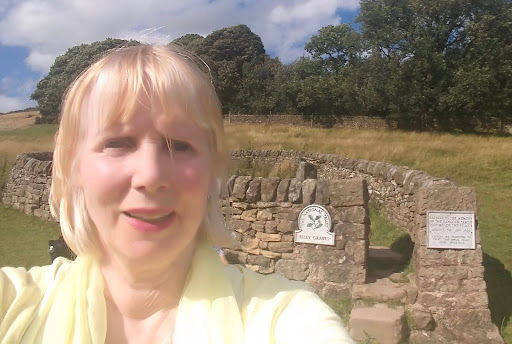Return to the Plague Village
- Dr. Vicky Jo

- Aug 14, 2021
- 3 min read
Friday was a day of closure for us. We finally got to see some sights we’ve been hankering to see since March 2020. Way back then, on the heels of lockdown being announced in the UK over COVID, we were fleeing south to Somerset to take up residence with friends to ride out the confinement.
Despite feeling stressed and anxious, we could not resist making a brief stop-over in Eyam (pronounced “eem”), commonly known as the Plague Village.

We learned about how the plague struck this tiny community, and eventually the church leaders gathered all of the citizens together and asked them to voluntarily isolate themselves from the world so as to protect their neighbors and prevent the spread of plague beyond the village limits. This noble and remarkable gesture was justified as an echo of a Bible verse: “Greater love hath no man than this, that he lay down his life for his friends” (John 15:13).
Why should the villagers accede to this request? The obvious answer is that these were Christian people who had grown up with Bible stories their entire lives. They were now being asked to mimic the sacrifice made by Jesus their Lord, who suffered death to ensure the redemption of the world—how could the villagers do any less?
And this is the place we stumbled onto in March 2020 as we made our way south to stay with friends who were likewise showing us “great love” with their hospitality.

The trouble is, since lockdown had just begun, there was no way to visit the museum nor the parish church where everything happened. We walked around town and read the signage and managed to get a brochure from a store as well as read material on the internet.
We ended up on a couple of wild goose chases, unable to locate what they call the “boundary stone,” where villagers would exchange money for food that was brought by their neighbors. It was advised to put the coins for payment into running water or vinegar to sanitize away any pestilence. (Vinegar was poured into the holes seen in the Boundary Stone below.)

We wanted to see this legendary marker, but we could not find it. Our GPS took us quite the wrong direction, and I misread a map that took me way off course. We finally had to get back on the road and abandon our ambitions… So it was with great delight (I realize that word is ironic) that we were finally able to return to Eyam and take in the sights we were denied when we had visited there previously. We were elated!
On Friday we toured the museum (I went overboard in the gift shop); we visited the ancient church; we looked for “Plague Doctor gin”; armed with proper directions we strolled out to the boundary stone (with the dog); and I even pushed my aching body to walk up the hill to view the “Riley Graves” by myself.
I was tired and my body was hurting after all our previous sightseeing, but I felt obliged to pay my respects at this site. Elizabeth Hancock of Riley Farm watched her husband and six of their children die of plague over a span of eight days, and she single-handedly dragged each of their bodies up the hill in the dark of night to bury them by herself. I find her courage stunning, although I sincerely wonder whether it was a blessing or a curse that her life was spared.

Last January I wrote a short academic article linking the Eyam story with COVID-19 and Jungian ideas, particularly typology. It was in response to a call for submissions by the Journal of Jungian Scholarly Studies (JJSS) for an issue they were planning that featured “Conversations in the Field.” It’s short, but it contains some important things I wanted to say. The article may be found on page 77 of the Journal, which you can easily view via this link:
If the story of Eyam sparks your interest, you can watch a 15-minute video enacting the tale recommended by the museum at the following link:
It was deeply satisfying to close the loop on this saga that started a year-and-a-half ago for us, and I’m glad I was granted the opportunity to do so. The grim story of Eyam is truly a tale for our time, and it will echo hauntingly in my soul forever.
Until next week….
warmly,
-Dr. Vicky Jo




Comments